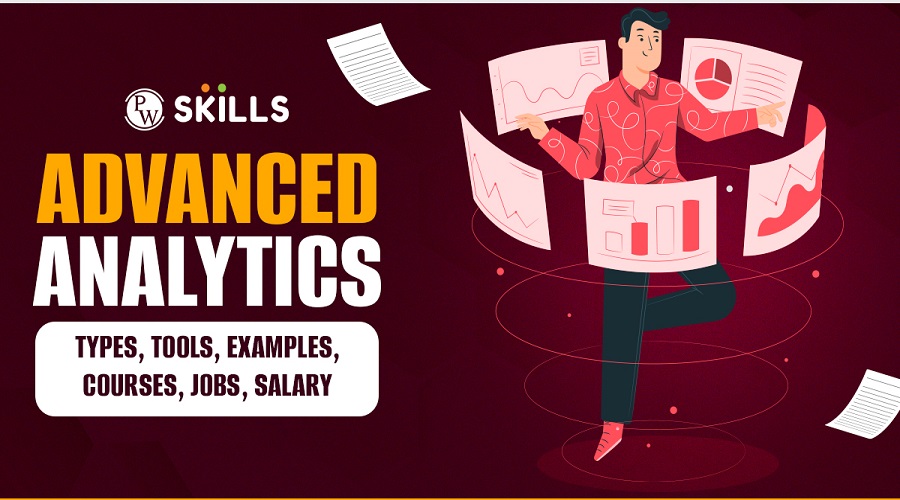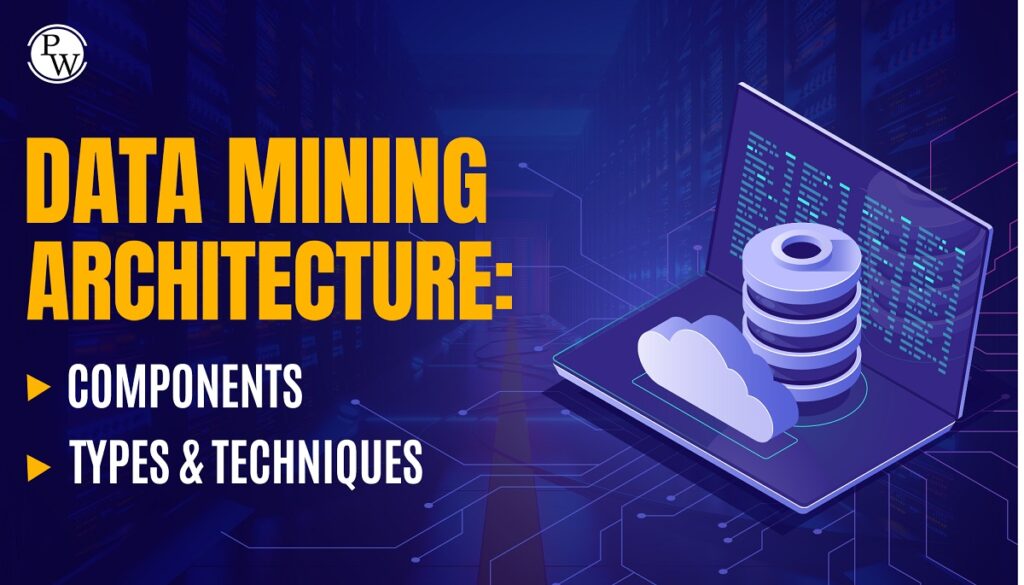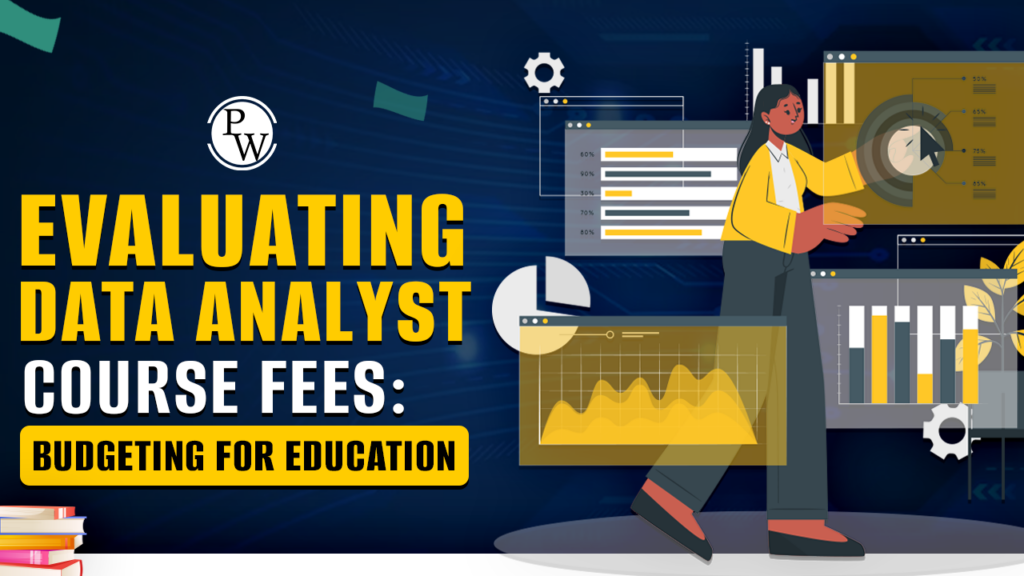Curious about Advanced Analytics? Learn how it goes beyond traditional data analysis, leveraging cutting-edge techniques to extract meaningful patterns and drive informed business strategies.
Advanced Analytics: Advanced analytics is the systematic use of mathematical and statistical algorithms on vast datasets to uncover meaningful patterns, correlations, and trends. In an era defined by data-driven decision-making, businesses are increasingly turning to advanced analytics to gain a competitive edge.
Advanced analytics goes beyond traditional methods, offering deeper insights and predictive capabilities. In this blog, we’ll talk about advanced analytics, its types, tools, examples, jobs, salary, and much more!
If you want to secure a high-paying job in data analytics, PhysicsWallah’s Data Analytics Course is highly recommended. In our course, you’ll be taught by the leaders in the data analytics industry that will ensure that you’re prepared with everything needed to succeed and secure a high-paying job as a data analyst. So, don’t wait! Enrol now and use the coupon code – “READER” at checkout to get an exclusive discount!
What is Advanced Analytics?
Advanced analytics goes beyond traditional analytics by utilising sophisticated techniques to extract actionable insights. The primary goal is to assist organisations in making strategic decisions, optimising processes, and gaining a competitive edge.
Advanced analytics comprises several key components, including descriptive analytics, which helps in summarising historical data; diagnostic analytics, which investigates the reasons behind past performance; predictive analytics, which forecasts future outcomes; prescriptive analytics, which suggests actions for desired outcomes; and comparative analytics, which benchmarks performance against peers.
Types of Advanced Analytics
Advanced analytics is not a standalone branch of analytics and there are many types of advanced analytics. Here are the different types of advanced analytics:
1. Descriptive Analytics
Descriptive analytics focuses on summarising historical data to provide a clear picture of what has happened. It involves generating reports, dashboards, and visualisations to present data in a comprehensible format. Businesses use descriptive analytics to gain insights into past performance, identify trends, and make informed decisions.
2. Diagnostic Analytics
Diagnostic analytics delves into the “why” of past performance by analysing data to uncover the root causes of specific outcomes. This type of analytics is crucial for understanding the factors that contributed to success or failure, allowing organisations to address underlying issues and optimise processes.
3. Predictive Analytics
Predictive analytics uses statistical algorithms and machine learning techniques to analyse historical data and make predictions about future outcomes. By identifying patterns and trends, businesses can anticipate potential scenarios and make proactive decisions. Predictive analytics is widely used in areas such as sales forecasting, risk management, and demand planning.
4. Prescriptive Analytics
Prescriptive analytics takes a step further by recommending actions to achieve desired outcomes. It considers various possible scenarios, assesses the impact of different decisions, and provides actionable insights. This type of analytics empowers organisations to make informed choices that align with their strategic goals.
5. Comparative Analytics
Comparative analytics involves benchmarking an organisation’s performance against industry peers or competitors. By comparing key performance indicators (KPIs) and metrics, businesses can identify areas of strength and weakness, enabling them to make data-driven decisions for improvement.
Advanced Analytics Tools
The effectiveness of advanced analytics relies heavily on the tools and platforms used to analyse and interpret data. Several powerful tools cater to different aspects of advanced analytics, offering a wide range of features and capabilities. Here are some of them:
- R and Python: Widely used programming languages for statistical analysis and machine learning.
- SAS: A software suite for advanced analytics, business intelligence, and data management.
- IBM SPSS: Statistical software used for predictive modelling, data mining, and decision support.
- Tableau: A data visualisation tool that helps turn raw data into interactive and shareable dashboards.
- Apache Spark: An open-source distributed computing system for big data processing and analytics.
- Microsoft Power BI: A business analytics service that provides interactive visualisations and business intelligence capabilities.
Features and Capabilities
Advanced analytics tools offer a range of features, including data integration, machine learning algorithms, model deployment, and visualisation capabilities. These tools empower data scientists and analysts to explore, analyse, and interpret complex datasets efficiently.
Selection Criteria for Choosing the Right Tool
When selecting an advanced analytics tool, organisations must consider factors such as scalability, ease of use, integration capabilities, and the specific requirements of their analytics projects. The chosen tool should align with the organisation’s goals and support the analytical needs of its users.
Also Read: How Data Science and Analytics Will Shape the Future of Work
Advanced Analytics Examples
To provide a deeper understanding of how advanced analytics is applied across diverse industries, let’s explore additional real-world examples that showcase the versatility and impact of these analytical techniques.
Healthcare: Patient Readmission Prediction
Hospitals and healthcare providers leverage advanced analytics to address the challenge of patient readmissions. By analysing patient data, including medical history, treatment plans, and demographic information, predictive analytics models can identify factors contributing to readmissions.
This allows healthcare professionals to intervene proactively, providing targeted care and support to patients at a higher risk of returning to the hospital. Ultimately, this not only improves patient outcomes but also reduces healthcare costs.
Retail: Inventory Optimization
In the retail sector, efficient inventory management is crucial for minimising costs and maximising profits. Advanced analytics enables retailers to optimise their inventory levels by analysing historical sales data, seasonality patterns, and external factors such as economic conditions.
Predictive analytics models help forecast demand for specific products, allowing retailers to adjust their inventory levels accordingly. This ensures that products are available when customers demand them, reducing stockouts and overstock situations.
Finance: Credit Scoring and Risk Assessment
Banks and financial institutions rely on advanced analytics for credit scoring and risk assessment. By analysing an individual’s credit history, financial behaviour, and other relevant factors, predictive models can assess the likelihood of timely loan repayment.
This enables financial institutions to make informed decisions about extending credit, setting interest rates, and managing overall risk. Advanced analytics plays a crucial role in mitigating financial risks and ensuring responsible lending practices.
Manufacturing: Quality Control and Defect Detection
In the manufacturing industry, maintaining high-quality standards is essential to ensure customer satisfaction and operational efficiency. Advanced analytics is employed for quality control and defect detection by analysing production data, sensor readings, and historical defect patterns.
Predictive analytics models can identify potential defects or deviations from quality standards in real-time, allowing manufacturers to take corrective actions promptly. This not only improves product quality but also reduces waste and production costs.
Marketing: Customer Lifetime Value Prediction
Understanding the long-term value of customers is a key objective for marketing teams. Advanced analytics enables businesses to predict customer lifetime value by analysing various factors such as purchase history, customer behaviour, and engagement metrics.
Predictive models can estimate the potential revenue a customer is likely to generate over their lifetime with the company. This information helps businesses tailor their marketing strategies, allocate resources effectively, and focus on acquiring and retaining high-value customers.
Transportation: Predictive Maintenance for Fleet Management
Transportation companies with large fleets of vehicles use advanced analytics for predictive maintenance. By analysing data from sensors, telematics, and historical maintenance records, predictive models can anticipate when specific components of a vehicle are likely to fail.
This enables proactive maintenance, reducing unplanned downtime, minimising repair costs, and ensuring the safety and reliability of the fleet. Predictive maintenance is especially valuable for logistics and delivery companies operating on tight schedules.
Also Read: Accounting & Data Analytics: What You Need To Know in 2024
Telecommunications: Churn Prediction
Telecom companies face challenges in retaining customers in a highly competitive market. Advanced analytics is employed for churn prediction by analysing customer usage patterns, service interactions, and feedback data.
Predictive models can identify customers at risk of churning, allowing telecom providers to implement targeted retention strategies. This may include personalised offers, improved customer service, or incentives to enhance customer loyalty. Churn prediction helps telecom companies reduce customer attrition and maintain a loyal customer base.
These examples showcase the versatility and impact of advanced analytics across diverse industries, emphasising its role in driving innovation and improving operational efficiency.
Advanced Analytics vs Data Science
While advanced analytics and data science are closely related, they serve distinct purposes and encompass different methodologies. Let’s explore the differences between these two fields and understand how they contribute to the broader landscape of data-driven decision-making.
Data science is a multidisciplinary field that combines statistical analysis, machine learning, data engineering, and domain expertise to extract insights and knowledge from data. It encompasses a broader range of activities, including data collection, cleaning, exploration, and the development of machine learning models.
While advanced analytics focuses on using statistical methods to analyse historical data and make predictions, data science encompasses a more comprehensive set of activities. Data scientists engage in exploratory data analysis, feature engineering, and the development of complex machine learning models to gain a deeper understanding of data and extract valuable insights.
Despite their differences, advanced analytics and data science often work hand in hand. Advanced analytics techniques are integral to the broader field of data science, providing valuable tools for analysing data and making predictions. The synergy between these two disciplines enhances the overall data-driven decision-making process.
Advanced Analytics Jobs
As the demand for advanced analytics continues to rise, new job roles are emerging in the field. Let’s explore the evolving landscape of advanced analytics jobs, the skills required, and the diverse career paths available.
Emerging Roles in Advanced Analytics
- Data Scientist: Analyses complex datasets to extract insights and build predictive models.
- Business Intelligence Analyst: Focuses on interpreting data to help organisations make strategic business decisions.
- Machine Learning Engineer: Develops algorithms and models for machine learning applications.
- Data Engineer: Designs, develops, and manages the infrastructure for data generation and analysis.
- Quantitative Analyst: Applies mathematical and statistical methods to financial and risk analysis.
- Operations Analyst: Optimizes business processes and identifies opportunities for improvement.
Skills and Qualifications Required
To excel in advanced analytics roles, professionals need a combination of technical and soft skills. Key skills include proficiency in programming languages (such as Python and R), statistical analysis, machine learning, data visualisation, and effective communication.
Educational backgrounds often include degrees in statistics, computer science, or related fields, supplemented by relevant certifications.
Career Paths and Growth Opportunities
The career paths in advanced analytics are diverse, allowing professionals to specialise in areas such as machine learning, big data analytics, or business intelligence. Continuous learning and staying updated with emerging technologies are essential for career growth in this dynamic field.
With the increasing demand for analytics expertise, professionals can explore opportunities for leadership roles, consulting, or entrepreneurship.
Also Read: 3D Data Visualization Tools, Online and Examples
Advanced Analytics Salary in India
As businesses recognize the value of advanced analytics, the demand for skilled professionals in India has surged. Understanding the salary trends in the field provides valuable insights for both job seekers and organisations looking to attract top talent.
Salaries for advanced analytics professionals in India vary based on factors such as experience, skills, location, and the specific industry. Entry-level positions, such as data analysts, may start with salaries like INR 1.8 Lakhs per annum, while experienced data scientists and machine learning engineers command higher compensation like INR 6.5 Lakhs per annum.
Factors Influencing Salary
Several factors influence salary levels in advanced analytics, including:
- Experience: More experienced professionals typically command higher salaries.
- Skills: Specialised skills in areas like machine learning or big data analytics can lead to higher compensation.
- Industry: Salaries may vary based on the industry, with finance and technology sectors often offering higher pay.
- Location: Salaries in metropolitan areas may be higher than in smaller cities or rural areas.
Comparison with Global Trends
While India has become a hub for analytics talent, salary levels in the country may differ from global benchmarks. Organisations should consider both local and global salary trends when developing competitive compensation packages to attract and retain top talent.
Advanced Data Analytics
The intersection of advanced analytics and big data has given rise to advanced data analytics—a powerful approach to extracting insights from massive and complex datasets. Let’s explore how advanced data analytics combines the strengths of both disciplines.
Interplay Between Advanced Analytics and Big Data
Big data encompasses the storage and processing of vast amounts of data, often characterised by the three Vs: volume, velocity, and variety. Advanced analytics leverages the capabilities of big data platforms to analyse and derive actionable insights from these large datasets.
Leveraging Advanced Analytics for Big Data Insights
Advanced data analytics involves applying sophisticated statistical models and machine learning algorithms to big data. This enables organisations to uncover hidden patterns, trends, and correlations that may not be apparent through traditional analytics methods. The integration of advanced analytics with big data enhances the depth and accuracy of insights, supporting more informed decision-making.
Challenges and Opportunities in Advanced Data Analytics
While advanced data analytics offers immense potential, it also presents challenges. Managing and analysing large datasets require robust infrastructure and skilled professionals. Organisations must invest in technology, training, and data governance to overcome these challenges. The opportunities, however, include gaining a competitive advantage, identifying new revenue streams, and improving operational efficiency through data-driven decision-making.
Also Read: What is ACL in data analytics?
Advanced Threat Analytics
In an era of increasing cyber threats, advanced threat analytics plays a critical role in safeguarding organisations from malicious activities.
Advanced threat analytics involves the use of advanced algorithms and machine learning techniques to detect and respond to sophisticated cyber threats. Traditional security measures are often insufficient against evolving threats, making advanced threat analytics crucial for identifying and mitigating risks.
Importance in Cybersecurity
As cyber threats become more sophisticated, organisations need proactive approaches to cybersecurity. Advanced threat analytics goes beyond traditional methods by continuously monitoring network activities, analysing patterns, and detecting anomalies that may indicate a potential security breach. This proactive approach allows organisations to respond swiftly to threats, minimising the impact of security incidents.
Case Studies on Detecting and Mitigating Threats
Real-world case studies illustrate the effectiveness of advanced threat analytics in cybersecurity. Organisations across industries have successfully used advanced analytics to:
- Detect Insider Threats: Analysing user behaviour to identify unusual patterns indicative of insider threats.
- Predictive Threat Modelling: Anticipating potential cyber threats based on historical data and current trends.
- Behavioural Analytics: Monitoring and analysing user behaviour to detect deviations from normal patterns.
These case studies highlight how advanced threat analytics goes beyond traditional cybersecurity measures, providing organisations with the tools to proactively defend against evolving threats.
Advanced analytics is a dynamic and indispensable tool for organisations seeking to extract valuable insights from data. From its foundational components to the practical applications in various industries, advanced analytics continues to reshape how businesses operate and make decisions.
As the field evolves, professionals in advanced analytics find themselves in high demand, with diverse career paths and opportunities for growth. Understanding salary trends, the interplay between advanced analytics and big data, and the critical role of advanced threat analytics further enhances our appreciation of this transformative field.
Advanced Analytics FAQs
What are the four types of advanced data analytics?
The four types of advanced data analytics are descriptive analytics, diagnostic analytics, predictive analytics, and prescriptive analytics.
What is the difference between data analytics and advanced analytics?
Data analytics involves examining historical data to identify trends, while advanced analytics goes beyond this by using sophisticated techniques like machine learning and predictive modelling for more insightful decision-making.
What is the meaning of advanced data analysis?
Advanced data analysis refers to the use of complex techniques and tools to analyse and interpret data, uncovering deeper insights and patterns beyond basic analysis methods.
What is AI and advanced analytics?
AI and advanced analytics involve the use of artificial intelligence to enhance data analytics processes, enabling automated learning and decision-making for more accurate predictions and insights.
What are the benefits of advanced analytics?
The benefits of advanced analytics include improved decision-making, enhanced predictive capabilities, increased operational efficiency, and a better understanding of complex data patterns for strategic planning.





